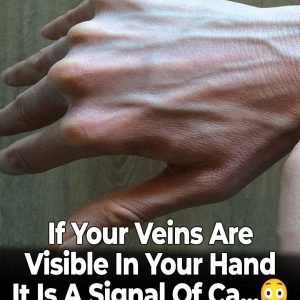Psoriasis is a chronic skin condition with several types: Plaque Psoriasis, marked by red patches with silvery scales; Guttate Psoriasis, characterized by small, drop-shaped spots; Pustular Psoriasis, featuring red skin with pus-filled blisters; Inverse Psoriasis, which affects moist skin folds; and Erythrodermic Psoriasis, a severe, emergency condition with widespread redness and peeling. It is not contagious. The causes include immune system dysregulation, where T-cells attack healthy skin cells, and genetic factors. Common triggers include alcohol, certain medications, and infections. Diagnosis is through a physical exam and sometimes a biopsy. Though incurable, treatments can manage symptoms and improve quality of life.
Related Posts

Why Are My Veins Suddenly Bulging and Visible?
Bulging veins are usually harmless and often appear due to “exercise, heat, aging, genetics, or weight,” most commonly on the legs and feet. For many, they are…

The Small Panel on Your Bumper That Could Save You When Everything Goes Wrong
Most drivers walk past it every day without a second glance—a small panel tucked into the bumper that looks “decorative, almost meaningless.” But that hidden cover hides…

Kennedy Center Gets a New Name ” shock”After a Unanimous Board Vote
The board of the Kennedy Center has “unanimously approved a historic renaming” of the famed cultural institution, a decision that has “sent shockwaves through Washington.” Supporters describe…

Understanding Your Sleep Style and What It Means for Your Goals!
Most people think of sleep as a simple break before the next day, but it often reflects how someone handles stress, ambition, and emotional weight. As the…

WYNONNA JUDD SHINES WITH POWERFUL NEW PRESENCE
In a striking new photo, Wynonna appears dressed in black from head to toe, her red hair bold and her stare unwavering. “It’s not just a promotional…

A Look Back at Peter Greene’s Unique Roles and Career Journey
The film community has been reflecting on the career of a character actor remembered for his “intense and memorable performances.” Recent news led fans and colleagues to…